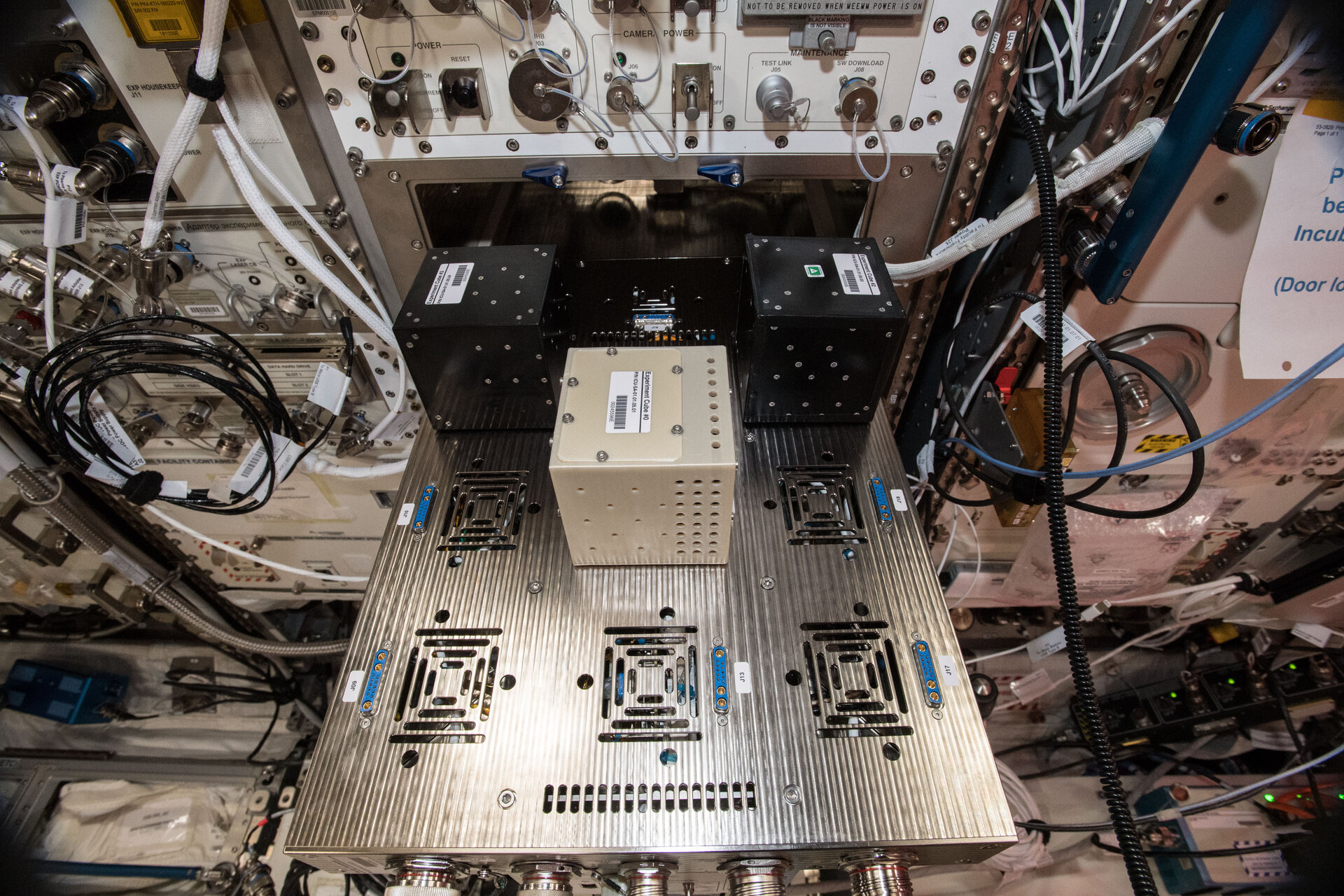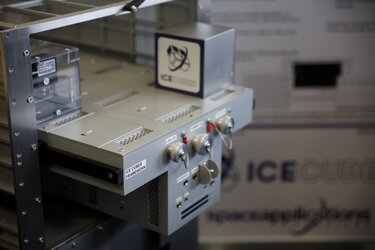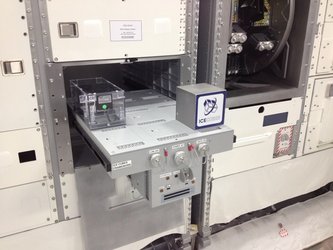Access your space experiment anywhere with ICE Cubes
Europe’s new commercial research facility on the International Space Station, called ICE Cubes or International Commercial Experiments Service, is inaugurating its new service today with a special event in Belgium. With the first experiments installed, the service is ready to perform operations in orbit.
The ICE Cubes facility in ESA’s space laboratory Columbus offers plug-and-play installation for cube-sized experiments that relay experiment data back to Earth through the International Space Station’s infrastructure.
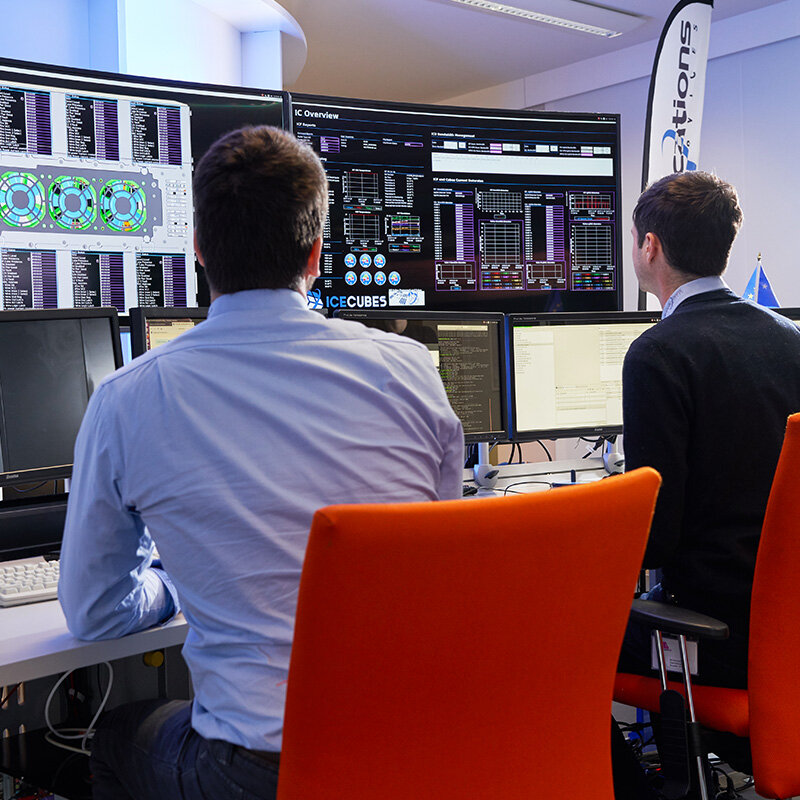
The ICE Cubes control centre in Sint-Stevens-Woluwe, Belgium offers unique continuous access to experiments. From anywhere in the world a customer can login to their ICE Cube through an internet connection. The data can be monitored at any time of the day and customers can even send commands to the experiment cubes to change parameters or start a next step in the experiment.
The ICE Cubes service is based on a partnership between Space Applications Services and ESA and is part of ESA’s human and robotic exploration strategy to ensure access to the weightless research possibilities in low Earth orbit.
Hilde Stenuit, ICE Cubes project business manager at Space Applications Services says, “We have over thirty years of experience in space research and are very proud to offer this unprecedented remote access to space. We are looking forward to running all types of experiments for our customers.”
Space close to the heart
The first experiments were installed by ESA astronaut Alexander Gerst this month and include projects supplied by the International Space University. The first experiment is researching methane-producing microorganisms and how they behave in space.
One cube is an interactive artwork in space that uses the control centre’s capabilities to the fullest. A person connects a simple heart-rate monitor and their pulse rate is sent to the cube in space where a kaleidoscope reacts to the user’s heart rate.

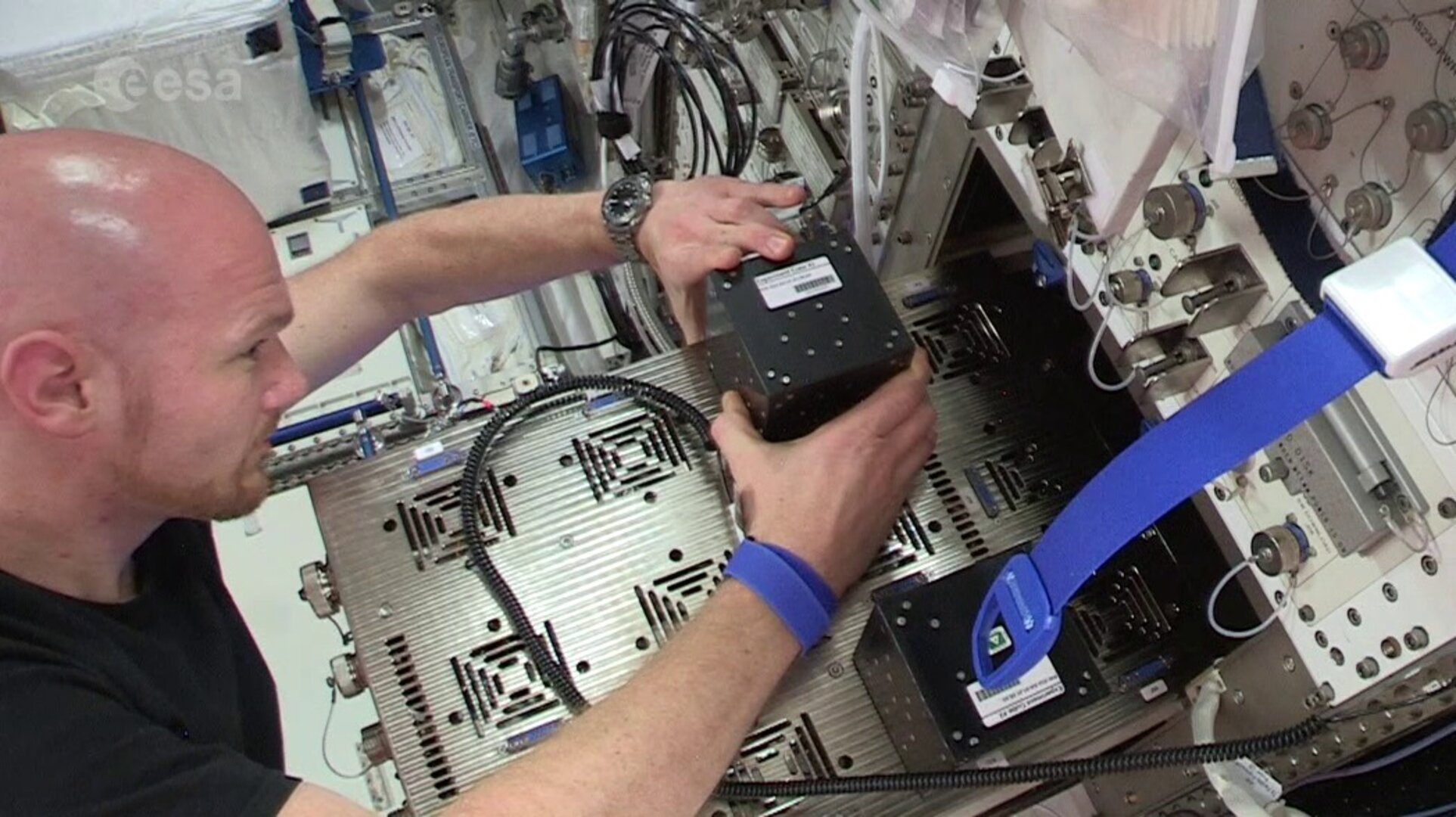
Access the video
Video is returned to the users via the control centre so they can see how the kaleidoscope moves in response to their heart rate. The round trip for the data is over tens of thousands of kilometres with the International Space Station flying at 28 800 km/h above our heads, but the service ensures a smooth and fast transfer of information.
These first experiments highlight the versatility of this easier, faster and more affordable access to research in weightlessness, ensuring any company, entity or educational institution can be a part of orbital research for years to come.
ESA is offering European students the opportunity to fly an experiment with ICE Cubes as part of their graduation thesis. Visit the education website for more details on the Orbit Your Thesis! Programme.
The ICE Cubes service allows experiments to run for over four months in space. Astronaut time and expert advice come as part of the package and experiments and samples can be returned to Earth for analysis.


